CONTENTS:
• Maria’s Story—a story from spiritual accompaniment told by Angela Rogerson
• My Evolving Understanding of Incarnation by Henrietta Adindu, SHCJ—a reflection from the perspective of directing the Spiritual Exercises
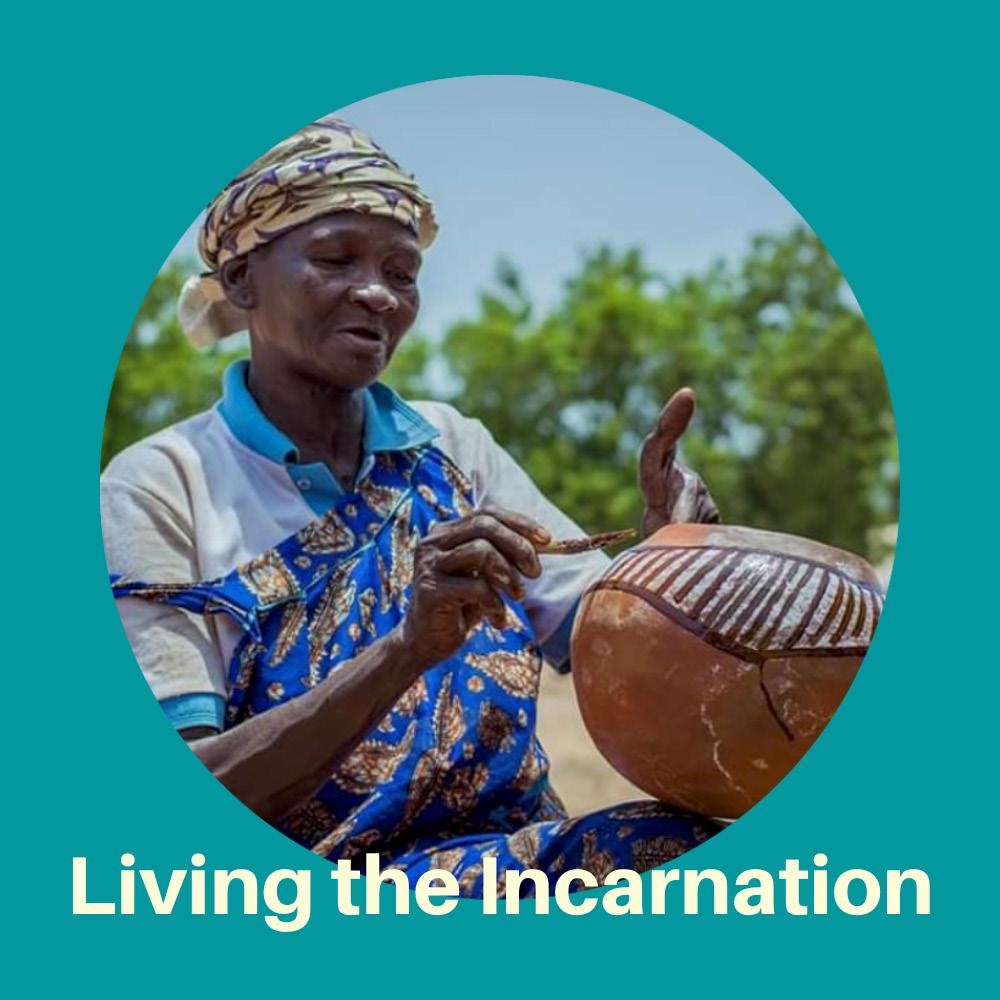
• Bread Broken for All by Gloria Okoh, SHCJ—Incarnation seen through the image of bread broken and shared
• We are the body—reflections by Emmanuella Akweongo, Louisa Ayirah & Mary Lawrence, SHCJ on being the embodiment of Christ today
• Our Incarnational Spirit—Chika Eze, SHCJ reflects in a 2-minute video on being a lecturer in the Guidance & Counseling Department of Veritas University, which she calls a good way to live our incarnational spirit
• Embodiment—Resources for Prayer on Christ’s body and our own bodies
• Called to Life in Abundance—personal reflections by Philomena Aidoo, SHCJ
• Kuchigoro—Ann Durst, SHCJ reflects on a photo of women made refugees by Boko Haram & living in the Kuchigoro camp in Nigeria
• All This Is Incarnation—Poems and Prayers by Kate Holmstrom, SHCJ and M. Joachim Forster (R.I.P.)
• Incarnation Is a Mystery—original poem by Lelia Duru, SHCJ
• Our Warp & Weft—brief reflections by Callista Ahachi, Doris Gali, Rita Igwenagum, Amaka Okoroafor, Jacinta Ugwu, Teresa Umana, SHCJ
• A Constant Exuberance, by Gifty Abane, Felicity Amikiya, Louisa Huni-Dadzie, SHCJ
• “Dark Night of the Soil,”—book review of Agrarian Spirit: Cultivating Faith, Community & the Land by Norman Wirzba
• Ordinariness?—the poem, “What You Missed the Day You Were Absent from 4th Grade,” by Brad Aaron Modlin
• Building the Reign of God in South Sudan, by Cecilia Nya, SHCJ
• Be Yourself—Elizabeth Mary Strub, SHCJ offers the words of Pedro Arrupe on the uniqueness of each human person
• Our Shared Evolved Understanding—a book review & reflection by Terri MacKenzie, SHCJ
• Veiled in Flesh by Sarah Bachelard—excerpts from her reflection on the transfiguration of Jesus
• My Story—Chris Wolff tells the story of her evolving understanding of Incarnation
• GOD—a notecard designed by Terri MacKenzie, SHCJ, featuring a quote by philosopher Beatruce Bruteau
• The Birthing of Presence—a reflection by Stella Envulu, SHCJ about Incarnation as “presence” and how she is called every day to share in God’s gift of “being with” us.
“Seeing, Being Seen, Helping Others See”
RE-SOURCE #1 — February 2 – May 27, 2023

One of the great privileges of Spiritual Accompaniment is hearing the stories people have to tell. Here is something “Maria” shared with me recently.
Seeing and being seen
Maria is a single woman who used to be a business executive. Ten years ago she took the decision to leave the security of a well-paid job, and work in a retreat centre. To supplement her income she took a job in a home caring for mentally and physically infirm elderly people.
She decided to mark her ten-year anniversary by inviting 10 friends to celebrate with her. She asked each person to bring her a word. The first word was “Seen.” The friend had chosen this word remembering a passage from Genesis 16:13, the story of Hagar in the desert:
Helping others see
The friend recognised Maria’s gift of seeing the Other in the frail, elderly and disabled ones she works with. And she helps them to see God.
Later Maria went on to describe an Easter celebration in the Care home, where she distributed musical instruments (tambourines, rain sticks, seed balls) and invited the residents to share in the song and music making. An old man in a wheelchair, normally silent and serious, found that his severe tremor produced a wonderful percussive sound and broke into a shining grin of pleasure.
“We are put on this earth but a little time, that we may learn to bear the beams of love.” (William Blake). Maria knows that her work brings pleasure and vitality and joyful creativity. The presence of love is at its heart.
The friend had witnessed Maria hearing the call of God, being seen by Him. It put Maria in mind of her experience at the start of the Spiritual Exercises, sitting with the question “How is God looking at you?... Does He look at me/us? Does he make his face shine on me/us... Really??

MARIA’S STORY:
As told by one who has seen Maria — Angela Rogerson
“She gave this name to the Lord who spoke to her, ‘You are the God who sees me,’ for she said, ‘I have now seen the One who sees me.’ ”
“... see one another; just as I have seen you ... you also are to see one another.”
John 13:34 (adapted)
My Evolving Understanding of Incarnation


 Henrietta Adindu, SHCJ
Henrietta Adindu, SHCJ
RE-SOURCE #1 — February 2 – May 23, 2023

So many gifts from our SHCJ heritage and lived experiences speak to me about our incarnational spirituality . . . . .
for example, our hymn that I love so much:
“Thou who was rich beyond all splendour, all for love’s sake, became man…”
In our Constitutions we quote 1 Corinthians 16: 14
“Let everything you do, be done in love” Love summarises our Incarnational Spirituality. It was love of humanity that led to the incarnation of the second person of the triune God.
Over the years I have grown to understand more deeply that Jesus Christ is fully divine and fully human. Sometimes we forget that second part; the humanity of Jesus, which is what the incarnation is all about. In his Spiritual Exercises, St. Ignatius Loyola encouraged what he called the “prayer of consideration,” which invites us to contemplate the human experience of Jesus of Nazareth.
For the past twenty years or so my ministry has included to a large extent leading people into more intimate relationship with the incarnate God through the 30-days retreat of the Spiritual Exercises of St. Ignatius. It was indeed a most touching experience to have the opportunity to actually visit the cave at Manresa in Spain where Ignatius spent nearly a year writing the Spiritual Exercises, over five hundred years ago.
The grace of the second week of the Spiritual Exercises invites the exercitant to know Jesus intimately in his humanity, to love him more intensely, and to follow him more closely. The exercitants consider the two standards and make daily conscious choices for Christ, for love; try to enter into the vision of God looking upon our messed-up world with compassion and out of love the second person of the trinity became human to show us the way.
How did Jesus live daily?
How did Jesus live from the crib to the cross?
How do we like Jesus live out the reality of the incarnation?
I invite us to daily consider the Prayer of Saint Richard of Chichester and perhaps make it your own.
Thanks be to thee my Lord Jesus Christ, for all the pains and insults thou hast borne for me, O most merciful redeemer, friend and brother, may I know thee more clearly, love thee more dearly and follow thee more nearly day by day. Amen.
. . . . .
“Bread Broken for All”
by Gloria Okoh, SHCJ
RE-SOURCE #1 — February 2 – May 27, 2023


“While they were eating, Jesus took bread and blessed it. He broke the bread, gave it to his disciples, and said, ‘Take this, and eat it. This is my body.’ ” Matthew 26:6
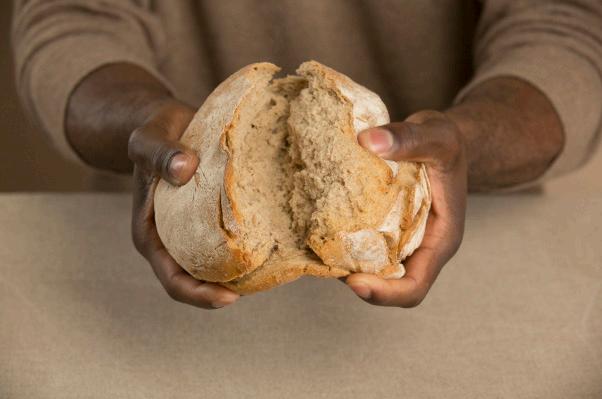
At the beginning of my formation, my understanding and experience of incarnation was that of God becoming human for my sake.
As I advance in the spirituality and understanding of the life I have chosen as an SHCJ, I have this to say about the image that spoke to me in the inter-province conversation, and continues to draw me now:
Incarnation speaks to me in the image of the Broken Bread. Jesus is Bread Broken for all (Sacrifice). Love leads to such sacrifice; without LOVE, there will be no SACRIFICE.
“Bread for the World” by Bernadette Farrell, from Journeysongs 3rd edition, OCP, 2012 CLICK ABOVE


“Bread to Share” by Marty Haugen, from All Are Welcome, Christian, 1995
Therefore, I am called to LOVE, to be BROKEN FOR OTHERS and to SACRIFICE. I ask myself and all who will read this, the question asked by St Thérèse of the Child Jesus:
“How do I treat the vulnerable, especially, those in my communities.”
WE ARE THE BODY of CHRIST— Reflections by Emmanuella Akweongo, Louise Ayirah & Mary Lawrence SHCJ

RE-SOURCE #1 — February 2 – May 27, 2023


All CLICKS are up above this page
“St
“We
What speaks to me about our incarnational spirituality is that I am called to be that embodiment of Christ here on earth. I am supposed to be the Christ incarnate to myself and others wherever I find myself.
Louisa Ayirah, SHCJ
“Christ has no body now but yours. No hands, no feet on earth but yours. Yours are the eyes through which he looks with compassion on this world ... the feet with which he walks to do good ... the hands through which he blesses all the world. Yours are the hands... the feet ... the eyes, you are his body. Christ has no body now on earth but yours.”
St. Teresa of Avila
Now you are
CLICK: Video Reflection LIVING INCARNATION
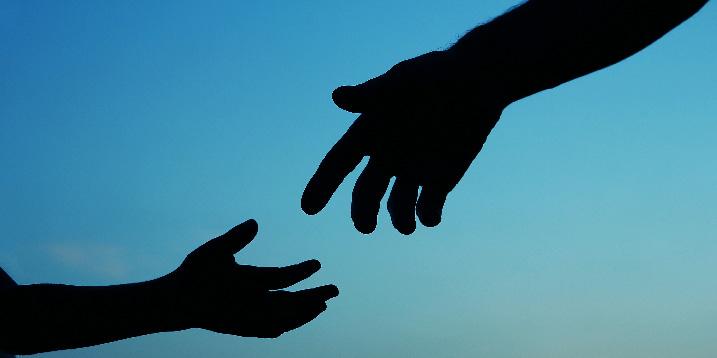
We have already been configured through our Baptism into another Christ Child, and so I make a conscious effort to imitate him by being child-like in my thoughts, words and actions. For me, being child-like means consciously living out simplicity in lifestyle and dressing, spending with prudence and sensitivity to the needy around me, accountability in tasks given, contentment with what I have and what is or is not provided for me, trusting absolutely in God’s providence, honesty and integrity in my personal life as well as in my interactions with people of diverse socio-cultural and religious backgrounds.
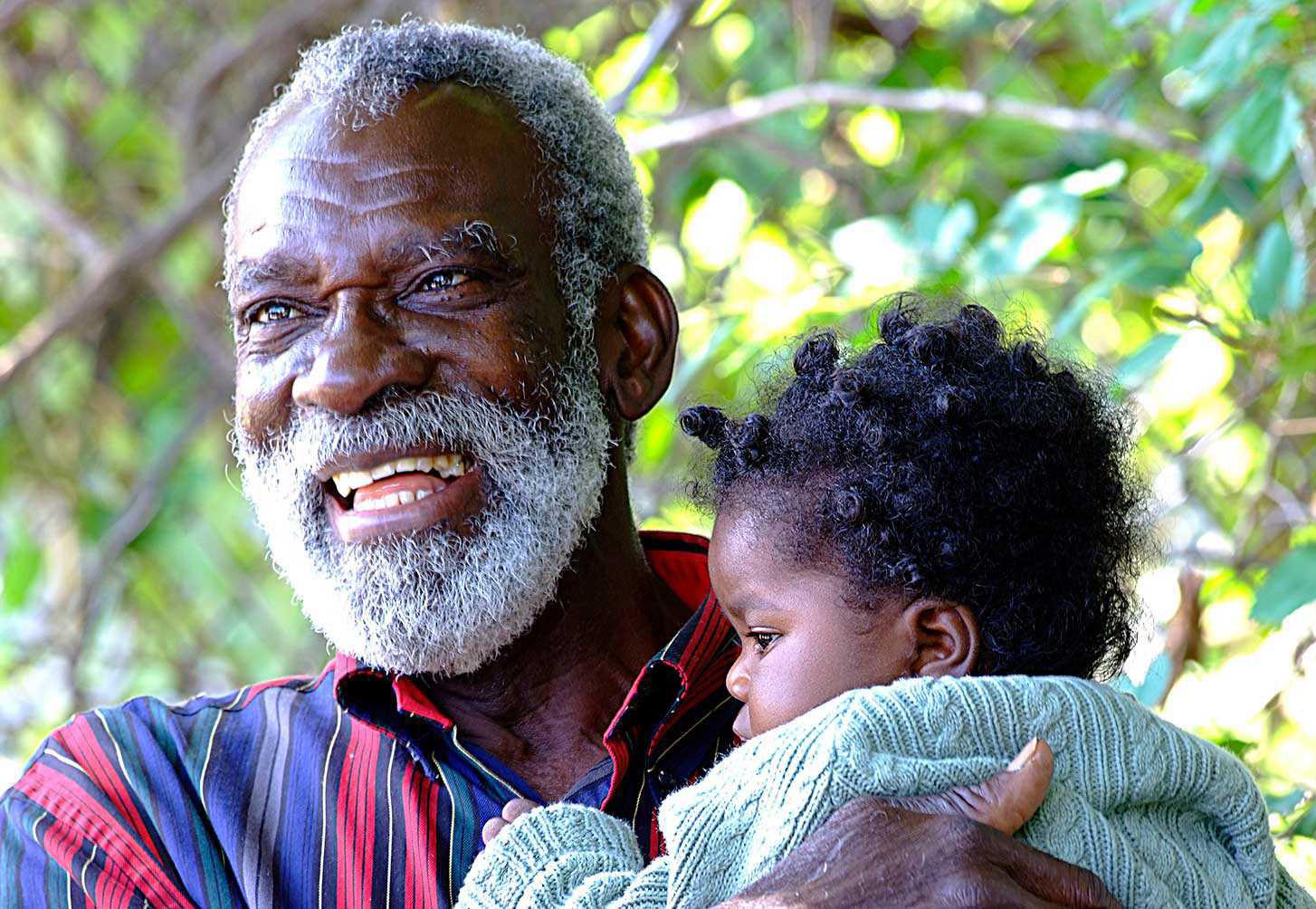 Mary Lawrence, SHCJ
Teresa’s Prayer” by John Michael Talbot, from the album Quiet Reflections, 1988 Sparrow Records
Are the Body of Christ” by Scott Wesley Brown, from More Like You, Christian, 1998
the body of Christ, & each one of you is a part of it. 1 Cor. 12:27
Emmanuella Akweongo
Mary Lawrence, SHCJ
Teresa’s Prayer” by John Michael Talbot, from the album Quiet Reflections, 1988 Sparrow Records
Are the Body of Christ” by Scott Wesley Brown, from More Like You, Christian, 1998
the body of Christ, & each one of you is a part of it. 1 Cor. 12:27
Emmanuella Akweongo
OUR INCARNATIONAL SPIRIT
by Chika Eze, SHCJ Senior Lecturer, Faculty of Education, Department of Guidance & Counseling, Veritas University, Abuja, Nigeria
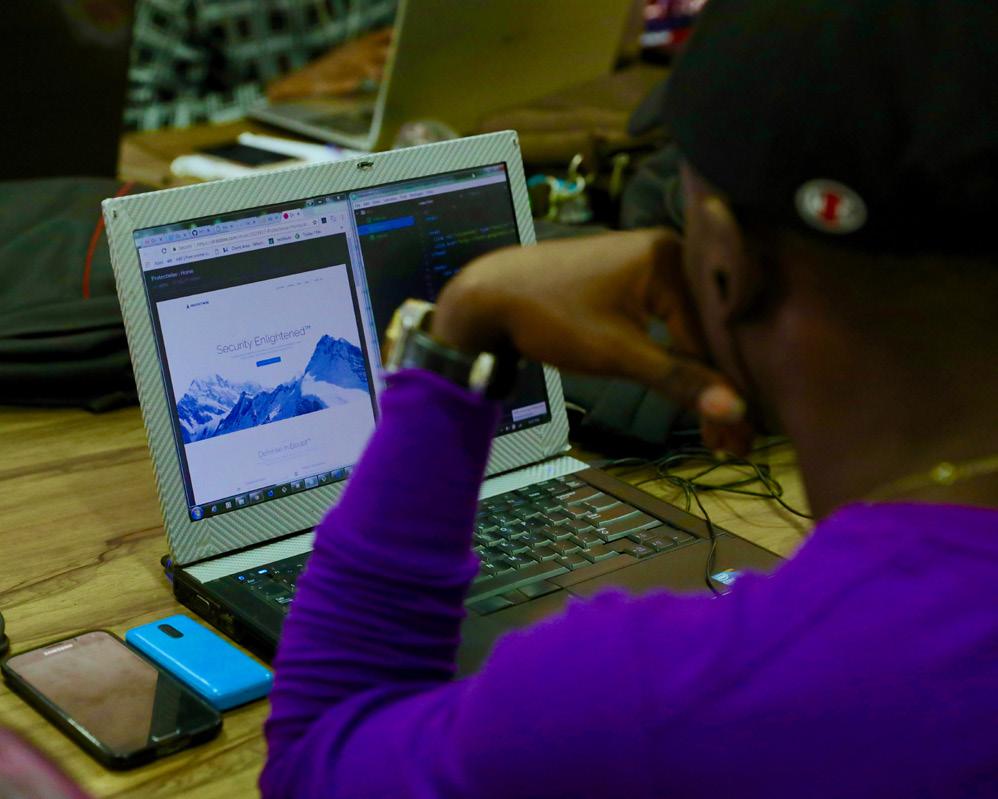

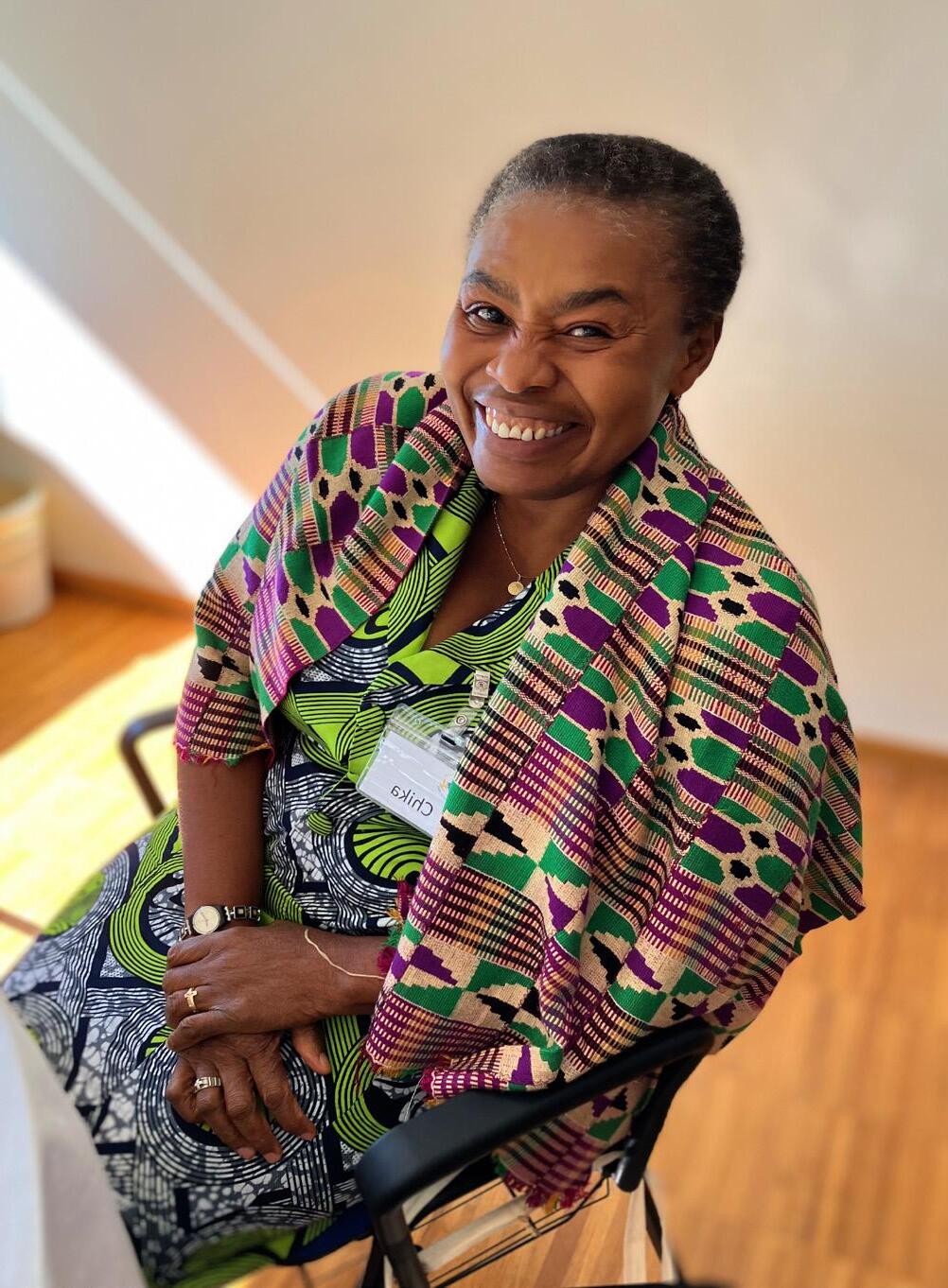
RE-SOURCE #1 —

February 2 – May 23, 2023
I'm looking at the issue of our incarnational spirit and how I understand it
I see it as a way of associating all my activity with that of God, trying to create life again.
View the 2-minute video in which Chika reflects on how she lives our incarnational spirit every day as a lecturer for university students
Chika Eze, SHCJ
EMBODIMENT — RESOURCES FOR PRAYER
… in Bethlehem of Judea the nativity of our Lord Jesus Christ according to the flesh: the enfleshment, the body-taking, the incarnation of the son of God …. Christmas is about the body, about the identification of Christ with our bodies. …. For us there is an experience of incarnation that is God’s will for the world; let us be aware of this grace, be thankful for it … let us remember that Christ came not only to take a body but to make a body, the church.
Andrew Ciferni, O.Praem.
WORD OF GOD — Hebrews 10:5-7
Therefore, when Christ came into the world, he said:
“Sacrifice and offering you did not desire, but a body you prepared for me; with burnt offerings and sin offerings you were not pleased. Then I said, ‘Here I am—it is written about me in the scroll— I have come to do your will, my God.”
Therefore, brothers and sisters, since we have confidence to enter the Most Holy Place by the blood of Jesus, by a new and living way opened for us through the curtain, that is, his body, and since we have a great priest over the house of God, let us draw near to God with a sincere heart and with the full assurance that faith brings, having our hearts sprinkled to cleanse us from a guilty conscience and having our bodies washed with pure water. Let us hold unswervingly to the hope we profess, for he who promised is faithful. And let us consider how we may spur one another on toward love and good deeds, not giving up meeting together, as some are in the habit of doing, but encouraging one another—and all the more as you see the Day approaching.
QUESTIONS TO PONDER
How have I known the body of Christ to be like a curtain opening a new & living way for me? How is my body a way for extending his Incarnation?
What is something I love about my body? What does it allow me to do? not do? What does my culture say about my body?
Gestures, movement, anointings, sprinklings ... all are integral to Catholic liturgical prayer. How does my body play a part in my personal prayer, now, at my present time of life?
TODAY’S HEADLINES
“Word of the Day: EMBODIMENT This word has appeared in 177 articles on NYTimes.com in the past year. Can you use it in a sentence?”
“The impact of body image on mental & physical health: UK government response”

“BODY IMAGE & ETHNIC BACKGROUND How does body image vary across people from different ethnic backgrounds?”
“Reducing social media use significantly improves body image in teens, young adults”
“FOREVER ‘BECOMING:’ Negotiating Gendered and Ageing Embodiment in Everyday Life”
“THE ROLE OF DANCE IN AFRICAN CULTURE”
“PRESENT TENSE: 9 Ways to Get Out of Your Head and Live an Embodied Life”
WHAT’S NORMAL AGING?
EMBODIMENT —RESOURCE #1 — February 2 –May 27, 2023
Word Made Flesh
The Role of Dance in African Culture
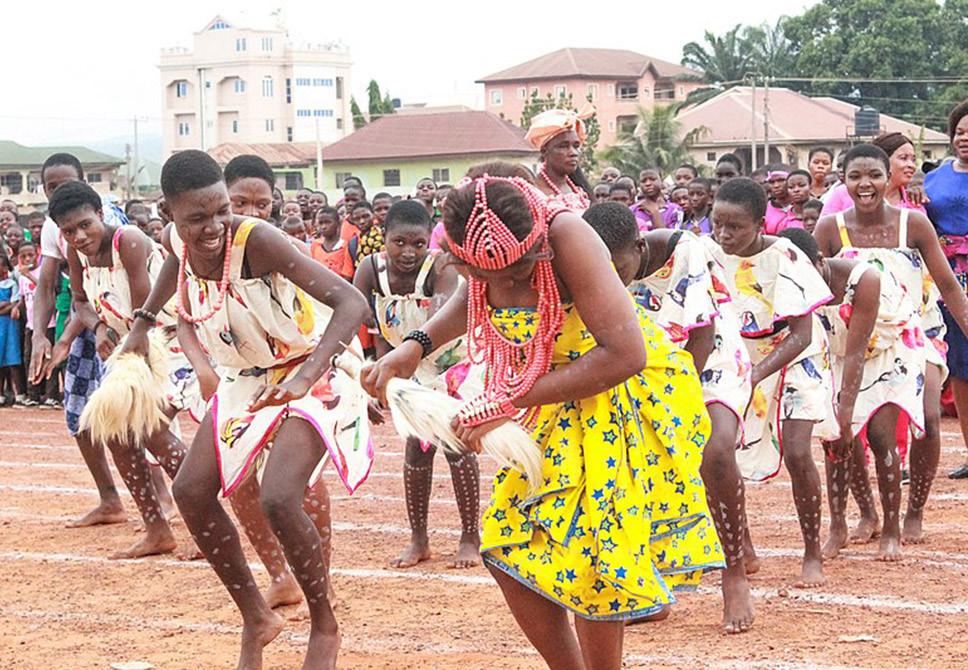 by Jim Cotter,
by Jim Cotter,
to
 the melody of Tantum Ergo
the melody of Tantum Ergo

Word made Flesh! We see Christ Jesus sharing our humanity, loving, graceful, always truthful, close to others bodily: full of passion, full of healing, touch of God to set them free.
Wonderful are these our bodies, flesh and blood to touch and see, place of pain and contradiction, yet of joy and ecstasy: place of passion, place of healing, touched by God who set us free.
O how glorious and resplendent, fragile body you shall be, when endued with so much beauty, full of life and strong and free: full of vigour, full of pleasure, that shall last eternally.
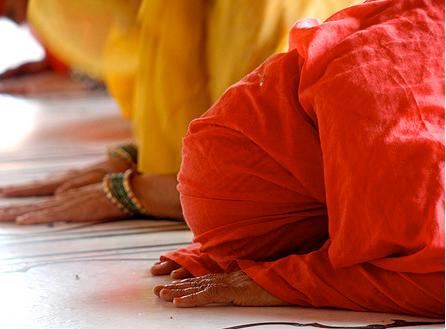
Glory give to God the Lover, grateful hearts to the Beloved, blessed be the Love between them, overflowing to our good: praise and worship, praise and worship give to God whose name is Love.

Praise We Christ’s Immortal Body
by Mary Morajeyo Okewola, SSL
[Dance] is an experience that moves us beyond the material to the intangible, simply a way we can express ourselves when words are deficient. We can feel the delight of a newly discovered love, assurance in the midst of incredible distress or difficulty, the energetic fire of our childhood, and the serenity of our milder and gentler years. In Africa what we call cultural or social dance are movements that embody our cultural values and standards….
To assure the accuracy of the movements that will preserve the integrity of culture, each clan in Nigeria has someone devoted to design and pass along the clan's customary moves. Because there are unique moves in each clan's culture, this "dance ace" guarantees that everybody knows what the moves are and how they are to be danced. These instructions are passed down through generations and some have never been adjusted. (NCR Global Sisters Report) CLICK to read more
https://www.globalsistersreport.org/news/spirituality/column/ role-dance-african-culture
performed by Denise LaGiglia & Jerry Galipeau from the album WINDOWS TO PEACE
Personal Experience of anIncarnational Spirituality
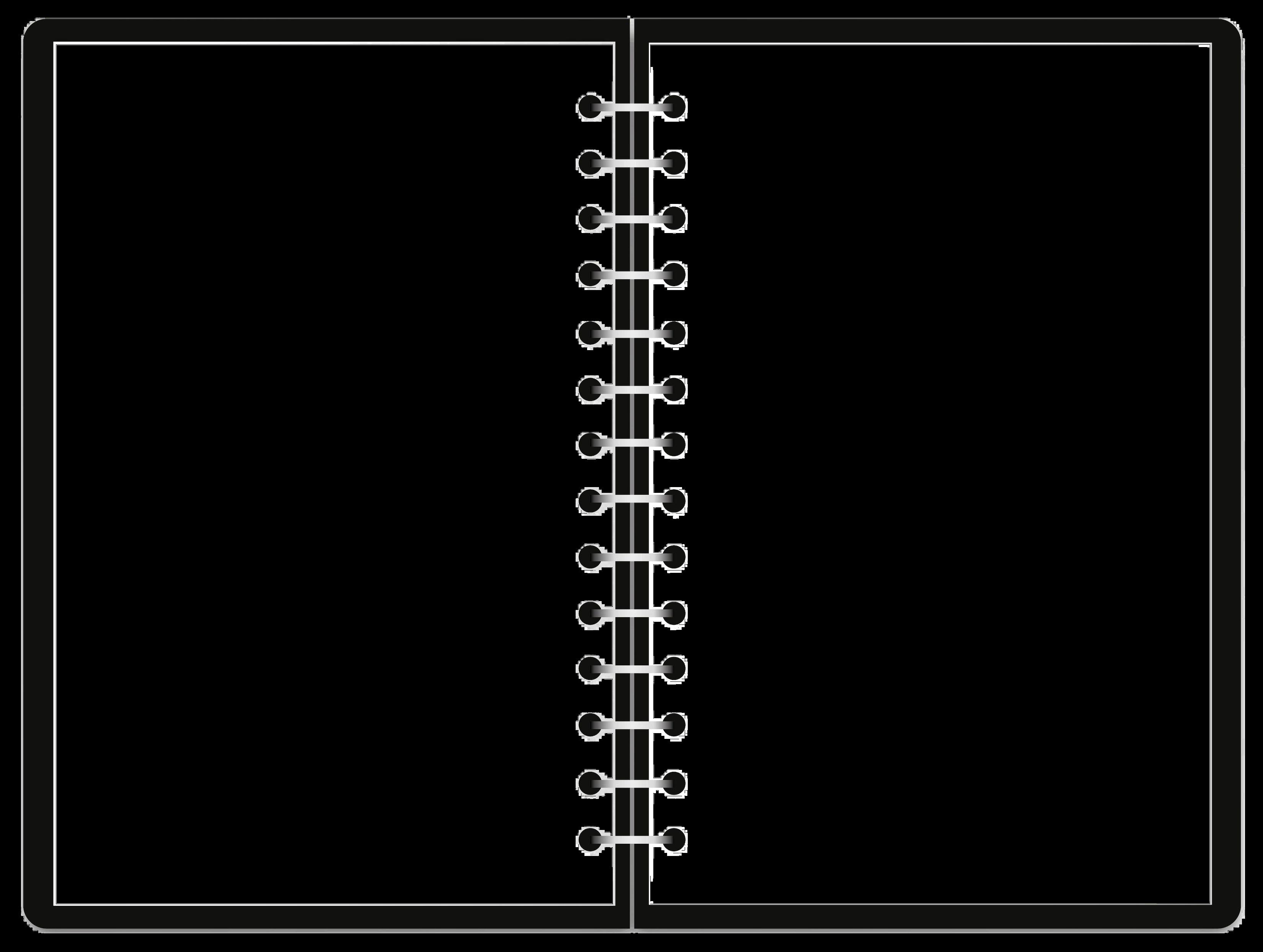 Philomena Aidoo, SHCJ
Philomena Aidoo, SHCJ

Incarnational spirituality has been a call to life in abundance (Jn 10:10). God is life in fullness and shares love and life with us gratuitously, without any precondition, without any price (Jn 15:15-17). Thus life becomes for me the greatest and the most precious gift from God (Is 43).
Like Cornelia, the mystery of the incarnation and the Spiritual Exercises of St Ignatius of Loyola played a decisive role at a crucial stage in my life, bringing me to a profound awareness of my own insertion in the paschal mystery. SHCJ mission as being that of helping “others to believe that God lives and acts in them and in our world, and to rejoice in his presence” (SHCJ Constitutions; 1983: n. 4) is a power of the resurrection and a great vocation for me.
My call of living the incarnational spirituality has become an instrument by which l can help others, especially in my present formation ministry to hear the paschal message of the Gospel and respond as individuals to their own Christian vocation to live the mystery of the incarnation.
Like Cornelia I can confidently say, “I belong all to God” (CC 21: 34-35) and this total belonging has freed me to give myself to others. My love for God has grown beyond imagination and I desire joyfully to live my life as one continuous act of love. The motto of the Society, a legacy of Cornelia Connelly, “Actions not Words”, articulates the commitment to action which SHCJ mission requires (Okure; 2005:15), thus incarnational spirituality.
“Called to Life in Abundance” by Philomena Aidoo, SHCJ. RE-SOURCE #1 — Feb ruary 2-May 27, 2023
When I considered Incarnation as finding God’s saving presence among us and making it known, I remembered this photo of Lena Nwaenyi chatting with this elderly woman in the Kuchigoro DiPC in Abuja. This elderly refugee fled the Boko Haram but now, without family members in the camp, is totally dependent on the kindness of other refugees.
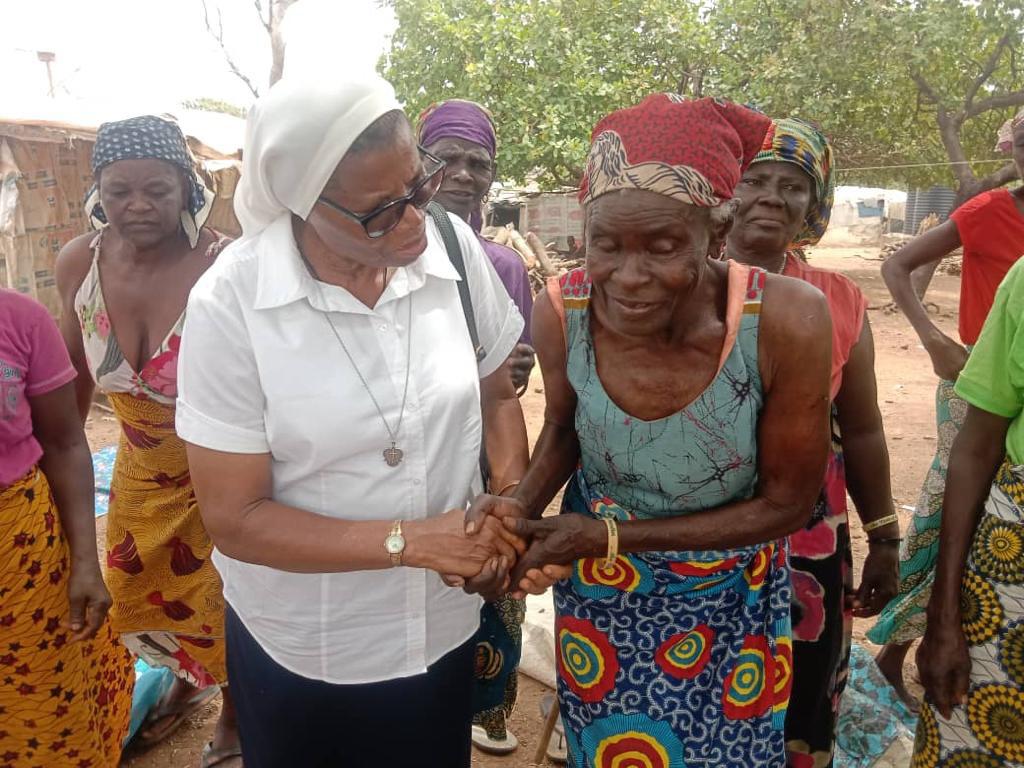 Ann Durst, SHCJ
Ann Durst, SHCJ
“ALL THIS IS INCARNATION”
RE-SOURCE #1 — February 1 – May 27, 2023

“It’s Good Friday Every Day . . . . .”
“Thank you ..... Old ..... and New”
by Kate Holmstrom, SHCJ & Joachim Forster, SHCJ
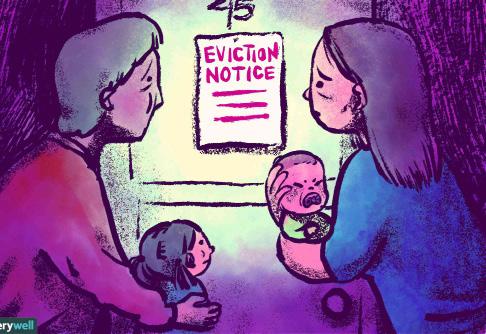
GOOD FRIDAY — K ate Holmstrom
Christ so silent in Paul who’s autistic, Christ in the shame of poor Vicky, just raped, Christ in hot tears at this young man’s passing, And Christ under morphine in that cancer ward. Christ in the law court, tense, white and worried, Christ has been mugged— now he’s shaken and sore. Christ got evicted, his things on the pavement, And Christ’s fallen out with the one that he loves.
“Now my soul is troubled. And what should I say—
‘Father, save me from this hour?’
Father, glorify your name. Then a voice came from heaven:
John 12: 27-29
Christ with a stammer and Christ with arthritis, Christ who’s obese and the others all laugh. Christ suspected and Christ in detention, Christ can’t speak English— he’s lost and afraid. There you are, Christ, in all faces of weakness. There is your glory, your wisdom and power. There is the gift of your self-revelation… That’s what you came for — welcome your hour. t
‘No, it is for this reason that I have come to this hour.
‘I have glorified it, and I will glorify it again.’ ”
Lord, help me live from day to day In such a self-forgetful way That, even when I kneel and pray My prayer shall be for “Others”.
Help me in all the work I do Ever to be sincere and true And know that all I do for you Must needs be done for “Others”.
Let self be crucified and slain And buried deep; and all in vain Its efforts be to rise again Unless to live for “Others”.


And when my work on earth is done And my new work in Heaven begun, May I forget the crown I’ve won, While thinking still of “Others”.
“Others”, Lord, yes, “Others”. Let this my motto be. Help me to live for others. That I may live for Thee.
Prayer of Thanks by Mary Joachim Forster, SHCJ (1896–1987)
Joachim was in the first group of SHCJ going to west Africa in 1930
Prayer of Thanks by Kate Holmstrom, SHCJ
I thank you, Lord, for you are good to me.
You woke me gently from a wholesome sleep, Provided crunching toast to please my palate. A sweet bird sang for me, high in a tree. A letter from a friend fell through the door, Warming my heart, and binding us once more. I didn’t miss the bus. I stroked a friendly dog Who wagged his tail and grinned: we liked each other! The sun came out a bit. My throat is sore no more. Passing an open window, I heard someone Practising on the flute. Mozart, I think. My neighbour’s funny baby amuses me, Investigating toes, and bag, with silent joy. His mother’s quiet good humour touches me: She talked to me, and listened to my answer. Your love shines through her peace and kindly smile. Such things are small, perhaps, but they are life –Your gifts to us, to me. I thank you, Lord.

To me, all this is Incarnation.

“Thank you . . . . . Old . . . . . and New”
INCARNATION IS A MYSTERY
by Lelia Duru, SHCJ
Incarnation is a MYSTERY
A mystery of Christian call
A CALL to live in the spiritual and material
The spiritual and material call to be a witness
A WITNESS that Christ may be made known
To be made known to those in darkness
To be made known to those yet to see the light
THE LIGHT THAT CHRIST IS
That Christ is HUMAN
That Christ is DIVINE
That CHRIST lived with us
That Christ is the EARTH and its fullness
That we might live fully humanly
That we may experience God's CREATIVITY
God's creativity that is endless
The endlessness of God's JOY

That we may know that GOD LIVES and ACTS in our world.
The WORLD God made that was and is still VERY GOOD.
“Incarnation Is a Mystery”
1 –May 27, 2023
by
Lelia Duru, SHCJ
— RE-SOURCE #1 —February
LIVING the INCARNATION
Our Warp & Weft RE-SOURCE #1 —

February 2 – May 27, 2023
The Angelus reminds me of our Incarnational spirituality, our reason for being. It speaks to me about God’s LOVE made manifest everywhere, & God’s call to me to feel this love & share it.
Callista Ahachi, SHCJ
For me, the Incarnation is lived in my conscious awareness of God’s presence in my life & in the lives of others, an awareness I carry into my ministry as well as making God’s presence a reality to those I meet.
Doris Gali, SHCJ
Cornelia’s words speak to me everyday as an educator: “as you step through the muddy streets, love God with your feet; & when your hands toil, & when you teach, love God with his little ones.”
Amaka Okoroafor, SHCJ
Jesus, the incarnate one, is the true vine & we are the branches. Faithfully abiding in him & nourished by this divine connection, we bear witness to him in our life together, & we serve humanity in our different apostolates.
Teresa Umana, SHCJ
God’s presence is visible in my effort to help others believe God lives and acts in them and in our world. To live truly as a Holy Child sister, I strive to live as being nothing less than a human person, and helping others to achieve the same.
Rita Igwenagum,
SHCJ
Weaving is a method of textile production in which two sets of threads are interlaced at right angles to form a thread or cloth. The vertical threads are the warp; the horizontal are the weft.

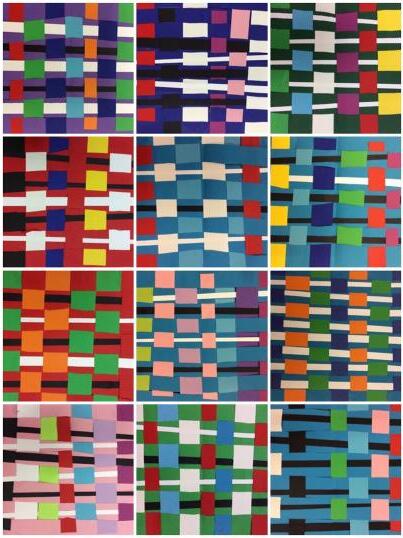
God in our midst, very fragile, tender; needing care, love & protection. Yet God he is. God’s presence as human — Mary’s son, a carpenter’s son, a Jew, from Nazareth.
“Can anything good come from Nazareth?”
Jacinta Ugwu, SHCJ
LIVING the INCARNATION
“A Constant Exuberance” by Gifty Abane, SHCJ
RE-SOURCE #1 — February 2 – May 27, 2023



Incarnation is an art of conscious daily expression of what and who I am in every facet of life, and in the sight of the Creator God — aa continual process of becoming my best self thus clearing and sharpening my senses in the light of “the incarnate word;” aa creative expression of the divine in every activity of my day, and that of others, just as potters inscribe their giftedness on their wares with passion and a sense of co-creating. Incarnation is “the behind-the-scenes energy of creativity” a a great sense of zeal that burst forth in the classroom, as gardening, cooking, singing, decorating, designing, weaving, at table, dancing, you name it; aan overpowering grace in acceptance of pain, suffering, rejection, crisis, fear and despair. Incarnation is a constant exuberance in concrete terms of a divine grandeur expressed in every possible human experience.
ECHOES
The mystery of the Incarnation, according to Ronald Rolheiser, OMI, is “God taking on human nature and dealing with human beings in a visible, tangible way.” God calls on us to continue to give his Incarnate Word to families, friends and strangers alike, in our homes, workplaces and our world. The Word, he says, is Incarnate when we:
God became human and continues to be so, each time I allow God to use me to further the Kingdom. So, God becomes flesh again in me and through me, touches & transforms lives. The same effect is multiplied in people of faith who let God fill their lives with the Spirit, & allow God’s kingdom to come in them, & God’s will to be done in them, & through them in others. Louisa
 Huni-Dadzie, SHCJ
Huni-Dadzie, SHCJ
Live with integrity as Jesus did. Care for others, treat others with dignity and respect. Affirm the goodness in others, when we lift up others. Forgive, no matter the hurt, as Jesus did. Open our eyes and ears to heed and respond as best as we can. Spread joy to others; work to bring justice and hope to others.
Felicity Amikiya, SHCJ
A potter making impressive designs on her earthen pot.Bolgatanga Craft
THE DARK NIGHT OF THE SOIL: A Book Review in THE TABLET, 18 March 2023
RE-SOURCE #1 — February 2 – May 27, 2023

Journalist Austen Ivereigh reports on an interview with Norman Wirzba about his recently published 15th book, Agrarian Spirit: Cultivating Faith, Community and the Land. In this book, says Ivereigh, Wirzba “argues that only by living and working with nature in ways that are mutually beneficial can we recover an authentic spirituality.” Below are several excerpts from Ivereigh’s complete account in THE TABLET which can be accessed at — https://www.thetablet.co.uk/

Wirzba, a Canadian theologian and ecologist, is the Gilbert T. Rowe Distinguished Professor of Christian Theology at Duke Divinity School and senior fellow at the Kenan Institute for Ethics at Duke University in Durham, NC.
…. Agrarian Spirit – Wirzba’s fifteenth book – proclaims from the treetops that an authentically incarnate, embodied, landed spirituality is absolutely central to Christian life and thought. “By saying that God is an agrarian God, I want to say very clearly that land is not optional,” Wirzba tells me with passion. “Because once you say it’s optional, you’ve denied embodiment. Because you can’t make sense of a human body apart from all the bodies – soil, water, microbes, fish, birds, weather patterns – we are connected to. And this is a scientific fact but also a theological fact, because God’s covenant from the beginning is with the whole of Creation.”
Agrarian spirituality, then, “is to take embodiment seriously:” it is at the heart of the story that culminates in, and begins from, the Incarnation of Jesus. From which it follows that the ways in which people satisfy their basic, inescapable, human needs — to eat, breathe, clothe themselves, seek shelter — are all inextricably moral, spiritual questions that demand our attention and action.
Agrarian spirituality ... is at the heart of the story that culminates in, and begins from, the Incarnation of Jesus.
…. It is not enough to hear what is happening; in order to care for Creation we must care about it. Which means entering what Wirzba calls a “dark night of the soil,” an agrarian mysticism that journeys into the presence of God via Creation, learning who and how God is, through habits and practices of faith that people can cultivate “to participate in God’s gardening and farming ways with the world.”
A reviewer on www.amazon.com observes that this book “explores how agrarian sensibilities and responsibilities transform the practices of prayer, perception, mystical union, humility, gratitude, and hope. Wirzba provides an elegant and compelling account of spiritual life that is both attuned to ancient scriptural sources and keyed to addressing the pressing social and ecological concerns of today.”
A

RE-SOURCE #1 — February 2 - May 27, 2023

“Brad Aaron Modlin is the Reynolds Endowed Chair of Creative Writing & a professor at University of Nebraska, Kearney, where he teaches undergraduates & grad students, coordinates the visiting writers series, & keeps “healthy” snacks in his office filing cabinet.” https://www.bradaaronmodlin.com/
“What
You Missed That Day You Were Absent from 4th Grade”
Mrs. Nelson explained how to stand still and listen to the wind, how to find meaning in pumping gas, how peeling potatoes can be a form of prayer. She took questions on how not to feel lost in the dark
After lunch she distributed worksheets that covered ways to remember your grandfather’s voice. Then the class discussed falling asleep without feeling you had forgotten to do something else—
something important—and how to believe the house you wake in is your home. This prompted
Mrs. Nelson to draw a chalkboard diagram detailing how to chant the Psalms during cigarette breaks,
and how not to squirm for sound when your own thoughts are all you hear; also, that you have enough.
The English lesson was that I am is a complete sentence.

And just before the afternoon bell, she made the math equation look easy. The one that proves that hundreds of questions, and feeling cold, and all those nights spent looking for whatever it was you lost, and one person add up to something.
What do I miss when I fail to pay attention & be present to what’s going on within & around me in the course of an ordinary day?
How do I experience “the ordinariness of everyday life” as a part of living “fully human lives?”
“ORDINARINESS?”
poem by Brad Aaron Modlin
“By living the Incarnation, most often in the ordinariness of everyday life and ministry, we become one body with one heart and spirit – cor unum –united in these core values that identify us so deeply.”
GC22 Enactments
BUILDING THE REIGN OF GOD IN SOUTH SUDAN
by Cecilia Nya, SHCJ
RE-SOURCE #1 — February, 2023
Prelude
“…incarnation does not refer simply to the birth of Jesus, but to the whole event of the Word of God becoming flesh, to every aspect of Jesus’s material and bodily existence, and to his whole life and ministry that culminates in his death and resurrection.”
From Deep Incarnation by Denis Edwards, Orbis Books, 2019, p. xvii
“The core of the preaching of Jesus of Nazareth is NOT himself nor the establishment of a church; it is the reign or kingdom of God, which is described by Catholic theologian Monika Hellwig as a kingdom of right relationships. Her description affirms that human endeavor, our efforts to bring about right relationships, is a vital and essential part of a process of the radical re-ordering in our world – a reordering of relationships, of the distribution of material goods, of the availability of opportunity…. The reign of God … will not come about without human effort. In other words, we are in the process of coming to the fullness of the third moment of Incarnation: the reign of God. We are partners with God in the building of the kingdom … remember: we are made in the image of God, and we are invited to participate in God’s project that extends from creation until the kingdom of right relationships is fully realized.”
From Incarnation as Worldview, a class on Incarnation for SHCJ novices, tertians and silver jubilarians presented by Tobie Tondi, SHCJ, 2017-2023
Building the reign of God in South Sudan: a reflection on the ecumenical visit of Pope Francis, February 3-5, 2023 by Cecilia Nya, SHCJ, volunteer at Solidarity with South Sudan, based at the Good Shepherd Peace Center in Kit, South Sudan
South Sudan is the world’s youngest country. It gained its independence only in 2011. Despite its oil wealth and fertile land, the country suffers from a low GDP and is rated to be one of the poorest countries in the world. Since 2013, the young country has been ravaged by political and ethnic conflicts, leaving its people facing one of the gravest humanitarian crises in the region that rarely makes headlines. As a result of these constant politically and ethnically motivated conflicts, thousands of South Sudanese today live as refugees in IDP camps within the country as well as in the neighbouring countries.
It is important to note that Christianity is the country’s major religion. with over 61% of the population affiliated with the Catholic, Episcopal and Presbyterian churches respectively.
At the Good Shepherd Peace Centre in Kit, we run a hospitality centre where different groups of people come to hold various programs – e.g. trauma healing, formators’ forum, assemblies, retreats, training sessions for staff -- all within a peaceful environment such that GSPC exists to offer.
…. At the RSASS (Religious Superiors’ Association of South Sudan) Assembly that also took place here, last year, 2022, I was deeply struck by how many of these courageous men and women religious, working mostly with people at the grassroots, expressed the feeling of helplessness and indeed almost hopelessness over any possibility of change in the government and in lives of the people, despite their hard work. Regularly, people are being killed, maimed, raped, made homeless as they move around the country to dodge the ever-shifting mosaic of violence, with the spirit of vengeance deeply embedded within.
…. In the light of the above, the historic visit of Pope Francis, joined by the Archbishop of Canterbury, His Grace Dr Justin Welby and the Presbyterian Head of the Church of Scotland, the Rt. Rev. Dr Iain Greenshields, is a strong statement to this young country that Christians worldwide stand solidly with them in their struggles against political or ethnic conflicts, corruption, injustices of all kinds, violence, particularly violence against women and the untold suffering many face having to live as refugees, far away from their farmlands, far away from their kith and kin.
…. as the three visitors arrived at the jam-packed stadium, two Biblical story scenes that came to mind were the Visitation of Elizabeth by Mary and the Presentation of Jesus in the Temple. Just as the child leapt for joy in Elizabeth’s womb at the sound of Mary’s greetings, so was there a thunderous and joyful outburst of songs of welcome, interspersed with high-pitched ululations, dancing and waving of the Vatican flag and their national flag. The visit had brought the country ‘A Present of PRESENCE, a Presence that brings renewed HOPE and BELIEF in the never-ending Love, Care, Faithfulness and Companionship and Compassion of God, the Father of us all.’
…. The epoch-making visit was also a clear learning for us all that conflicts, gun battles and show of force can never restore absolute peace among any warring groups. Only Non- Violence is the Supreme law of life! This takes courage, strength to forgive, humility, obedience and great maturity, and done in the spirit of justice and with a renewed sense of solidarity and care for one another.
CLICK https://www.youtube.com/watch?v=fZiCsl8sbb0 – to view Cecilia’s interview with ACI Africa, February 10, 2023
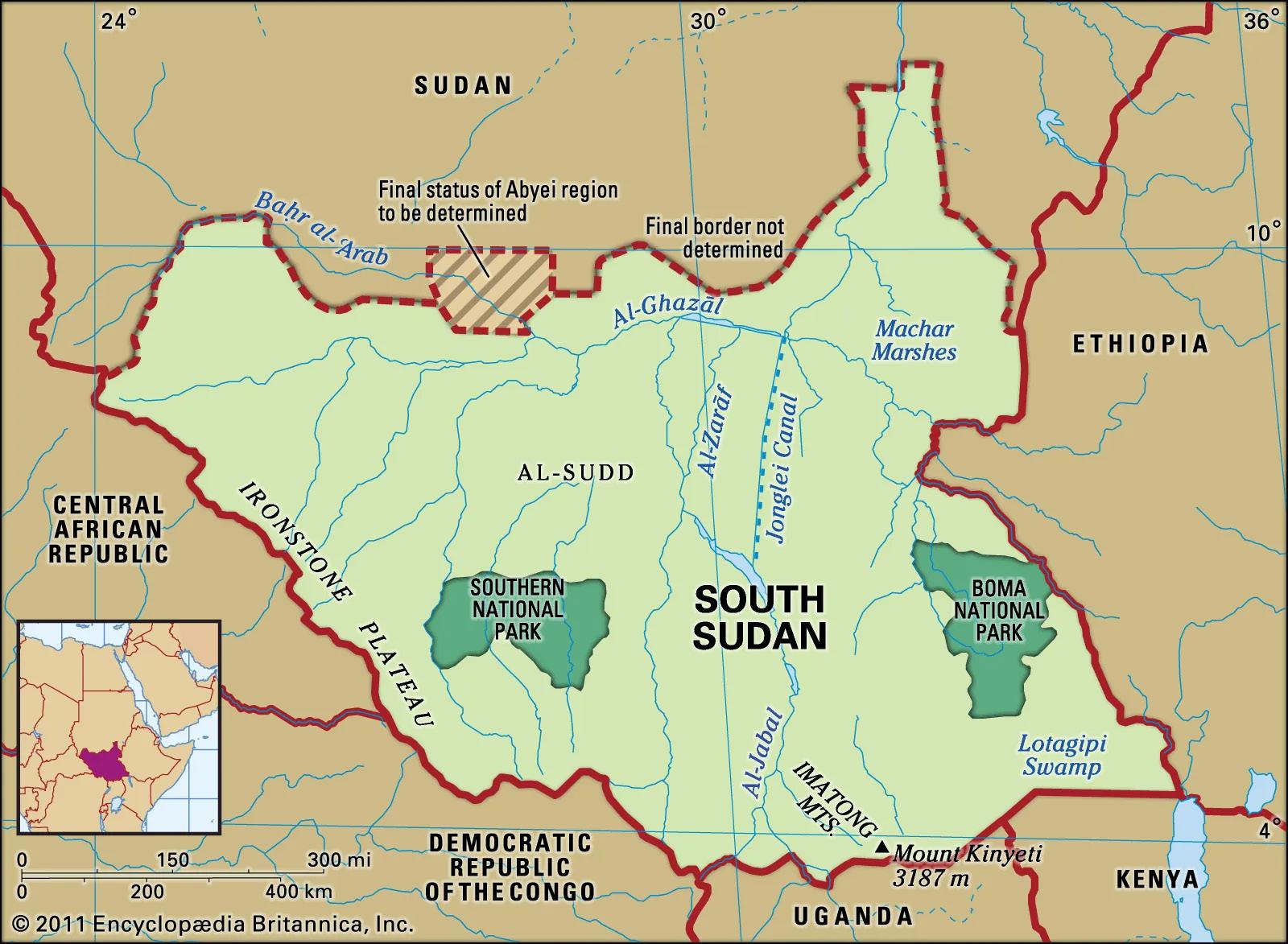
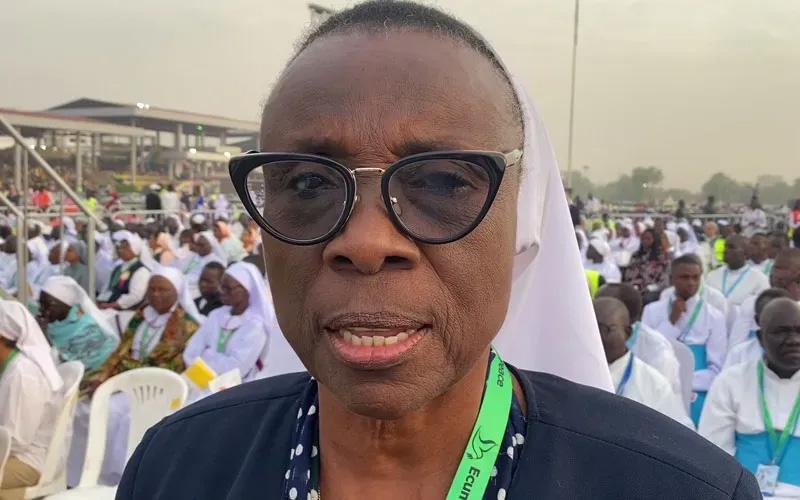 Cecilia Nya, SHCJ, in an interview with Association for Catholic Information in Africa (ACI)
Cecilia Nya, SHCJ, in an interview with Association for Catholic Information in Africa (ACI)
BE YOURSELF . . .
RE-SOURCE: Session #1 — February 2, 2023

Elizabeth Mary Strub, SHCJ says, “I put this quotation under the broad theme of Incarnation. Each person incarnates a unique thought of the creator and becomes absorbed into the Incarnate Christ and so into the Trinity.” It is attributed to Pedro Arrupe, SJ, although we have not yet been able to find the exact source.
Each person’s history is original and different: when we hear these personal histories we perceive that something is left unsaid in all of them because it cannot be spoken.
It is a personal secret that even the person him/herself cannot fully perceive. This part of their story that is hidden or half/ hidden, even to themselves, is the most truly interesting part, because it is what is most intimate, profound and personal.
It is the close correlation between God who is love and who loves each person in a different way, and the person, who in the depths of his/her being, gives a unique response, for there will be no other response like it in all of history.
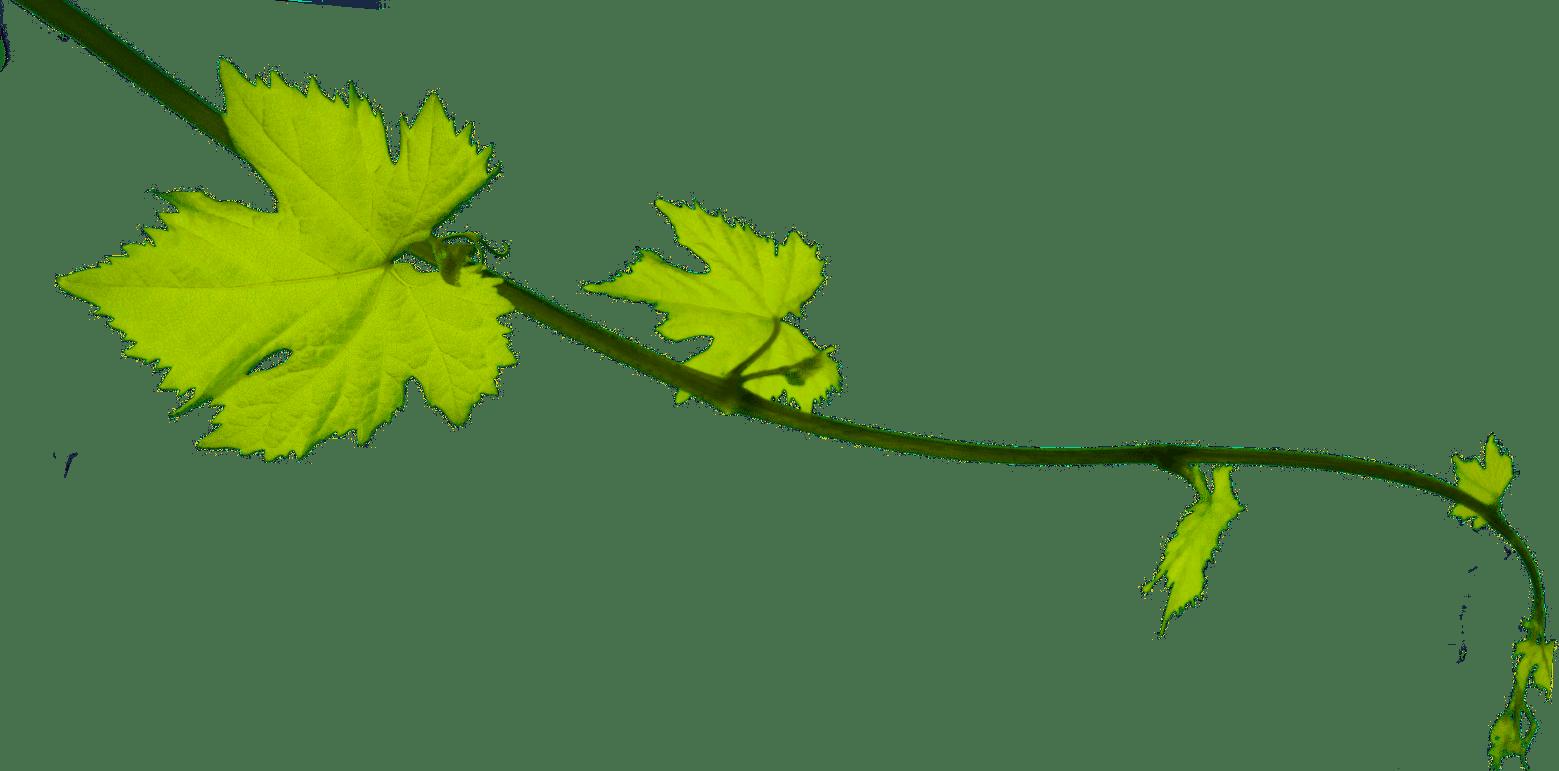
It is the secret of the marvelous Trinitarian love that erupts, when it so desires, into the life of each person in a way that is unexpected, inexpressible, irrational, irresistible, but at the same time marvelous and decisive.
“Abide in me, as I in you ..... As the Father loved me, I also love you;. abide in my love ..... These things I have spoken to you that My joy may remain in you, and that your joy may be full.” John 15: 4-11
INCARNATION: A Reflection on Our Shared, Evolving Understanding
By Terri MacKenzie, SHCJ
RE-SOURCE: Session #1 — February 2, 2023
Because of our on-going efforts to deepen our understanding of Incarnation, the metaphors we choose and translations of relevant words are of great interest to me.
For example, “heaven” in Aramaic is not a place, but the image of ‘light and sound shining through all creation.’” (Neil Douglas-Klotz, The Our Father in Aramaic). Picture Our Father there!
Consider “And the Word became flesh.” According to Elizabeth Johnson, the Hebrew “sarx” (flesh) applies to more than Jesus, more than humans, and includes all matter. It “encompass[es] the whole biological world and the cosmic dust of which they are composed.”
. . . Perhaps you have experienced this sacred Wholeness . . .
Perhaps you have experienced this sacred Wholeness, this awareness that you are part of a divine-infused universal unity. Although the experience is beyond words, we seek them. Thich Nhat Han calls it the “web of interbeing” and Karen Barad suggests “intra-action”: “a continual process of emergence, in which nothing is certain or fixed, but is always becoming itself through its intra-action with everything else.” (See Teilhard de Chardin, Thomas Berry, Thomas Merton, Richard Rohr, Ilia Delio and many others.)
Of all the metaphors and phrases that have traveled through times, cultures and worldviews to name the nameless Mystery, most often we use “God.” When I read Brian Swimme’s The Universe Is a Green Dragon, I was disappointed that he had not used that word. I mentioned this to a friend who replied, “but the whole book is about God!” I needed three letters because, sadly, I had confused metaphor with reality.
The SHCJ’s 1986 general chapter, recognizing the hazards of overusing metaphors, especially masculine ones, called us to promote multiple images of God. The 1992 general chapter asked that the constitutions be written in inclusive language. The introduction to the 1994 Inclusive Language Version concludes with these words: “we encourage thinking and dialog about this important expression of our shared vision.”
This need of our time is highlighted by Irish theologian Dermot Lane in Theology and Ecology in Dialogue: The Wisdom of Laudato Si’.’ (Messenger Publications 2020) —
“The intellectual credibility — even the survival — of all religious traditions depends now on how convincingly they adapt their beliefs and aspirations to a scientifically understood universe whose special extension, temporal scale, and creative unfolding were unknown to religion’s founders and main teachers.”
Rooted in our rich history, I believe shared, evolving understanding of Incarnation can contribute to that survival!
See next page for a recommended reading g g g g g g g g g g g g
Book recommendation by Terri MacKenzie, SHCJ February 2023
God Reflected: Metaphors for Life

Flora A. Keshgegian, Fortress Press, 2008
As we explore our growth in understanding Incarnation, a book devoted to metaphors for God might be helpful. The beginning of this 184-page primer, written by a woman theologian and Episcopal priest, discusses “God’s will,” metaphors, and truth. Seven different metaphors each merit a chapter that includes scriptural and cultural backgrounds, ramifications, strengths and limitations. The epilogue explores discernment, cultural context, prayer and action, and power. The book includes Notes, Index, and suggestions for further reading.
A sample from the second chapter:
“Historically and still today theologians have tended to perceive God’s transcendence and immanence as opposed or in tension. …usually, in the end, these theologians put more value on transcendence.
As a result, Christianity, the religion that claims God became incarnate in the person of Jesus, that God was present in human flesh, has remained wary of the immanence implied by incarnation. This is one of the ironies of Christian theology….
Another traditional theological affirmation is that God, the divine, is mystery. … To say that God is mystery is to acknowledge that God is in some sense unknowable or that we cannot fully know God.
Yet, at the same time, the term communicates our desire for God, to know and be known. Mystery draws us in. What is unknown is alluring, even if somewhat unsettling. God as mystery attracts….”
How the author describes this book —
https://www.florak.org/_i__god_reflected__metaphors_for_life__i__94502.htm
People often search for God's will for their lives, especially when faced with a decision, tragedy, or death. But what is meant by God's will? How does God act? How do they imagine the person and character God? This book surveys a variety of images for God, drawn from the Christian tradition and set within cultural contexts, including God as lord and master, as patriarch, as merciful father, as nurturing parent, as one who suffers with us, as one in relation, as energy for life. These are all metaphors that tell us important things about God, but do not define or confine who God is. As the chapters move through the metaphors, God's will is less about controlling action and more about encouraging life for all. Ultimately, the book redefines power, God's power and ours. "God Reflected" is helpful for those looking for new ways to imagine God and to find answers for questions about God's presence in their lives.
in Flesh” (Matthew 17: 1-9) by Sarah Bachelard
RE-SOURCE #1 — February 2 – May 27, 2023

Sarah Bachelard is a theologian and the leader of the Benedictine Contemplative Church, an ecumenical christian community, functioning both online, and from its base in Lyneham ACT, Australia (a suburb of Canberra in Australian Capitol Territory). She offered this reflection on February 23rd when the gospel story of the transfiguration of Jesus was featured in her Church’s liturgical calendar. For Catholics and many other Christians, this is the gospel for the second Sunday of Lent.
In this reflection, Bachelard draws on two contemporary writings —The Difference Jesus Makes by James Alison and Temple Theology: An Introduction by Margaret Barker — to offer fresh insights into the deep meaning of Jesus’ transfiguration, which leads us ultimately to the deep meaning of incarnation — to make the invisible God visible. The title of her reflection, “Veiled in Flesh,” is taken from the second verse of the Christmas hymn, “Hark the Herald Angels Sing:”
Veiled in flesh the Godhead see, Hail th’ incarnate Deity!
Pleased as man with man to dwell, Jesus our Immanuel.
Some excerpts are printed below.
Click here to read the full reflection
https://benedictus.com.au/wp-content/uploads/2023/02/Veiled-in-Flesh-180223.pdf
To listen to a recording of it, click here
https://benedictus.com.au/wp-content/uploads/2023/02/Audio-180223.mp3
“It’s often noted that the story of Transfiguration is symbol rich …. But there’s a further dimension to this dense layering of meaning I’ve discovered recently that I find powerful and important ….”
“[T]he First Temple in ancient Israel … built by Solomon, [was] destroyed in 587 BCE and replicated in the Second Temple which was known by Jesus and his disciples.1 [Inside the Temple, the Holy of Holies] was surrounded by a veil, so … it’s easy for us to assume ‘the Temple was a place into which … people went in order to offer sacrifice to God, who dwelt mysteriously and invisibly at the centre of it all’.2 [But] what’s actually signified is a movement that goes the other way. The Temple is not, in the first instance, about us moving towards God, but about God moving towards us.
[The major feast of the Temple in Jesus’ time was the Rite of Atonement when] “once a year the Lord would emerge from the Holy of Holies, come through the Veil into the created order, so as to offer sacrifice on our behalf. And note, this was not a human sacrifice to placate an angry God; it was God coming into the world so as to restore the harmony of creation, the relationships that had gotten snarled up in the course of the year.” [Ritually, it was the role of the High Priest to represent God for the day]
“dressed in white; he went into the Holy Place (beyond sight of those watching), and then came out again (having so communed in prayer with God that he has become ‘one’ with God), his white robe brilliant against the rich, multi-coloured fabric of the Temple Veil ….
“Veiled
“Veiled in flesh the Godhead see,” proclaims the Christmas hymn. This is the meaning of Jesus’ incarnation. It’s what the disciples realise at the Transfiguration; and now it’s our vocation too.
There seems an obvious echo of this rite of Atonement in the gospel’s account of the Transfiguration, and it helps interpret what’s coming next. Jesus is depicted as the High Priest, though he is not just symbolically but truly one with God. He communes with God in the space beyond creation and comes out into the world (dressed in dazzling white) so as to reconnect creation to its foundation and fullness. At the Transfiguration, the disciples have a vision of God, in the person of Jesus, coming towards us to make us one.

[Another] feature of the Temple rite was that after the High Priest emerged from the Holy of Holies in his white robe, the other priests straight away covered him with a second garment. This was made of exactly the same multi-coloured material as the Temple Veil with one small difference. It was shot through with gold filament, indicating that the one wearing it has come through from ‘the other side’. God, who is in principle invisible, can now be seen ….
And it seems to me there’s something here in this image of a human being clothed in the ordinary fabric of the world, yet with the garment shot through with gold filament that is a profound resource. For me, it offers a way of imagining what matters about our faithfulness to prayer and worship, as well as to the tasks and difficulties of our daily life. How else can the invisible God become visible, the immaterial become material, the unsayable name become sayable, except as it is borne and translated by actions, lives and words that are open to the reality beyond while faithful to the here and now. ‘Veiled in flesh, the Godhead see’ proclaims the Christmas hymn. This is the meaning of Jesus’ incarnation; it’s what the disciples realise at the Transfiguration; and now it’s our vocation too.”
1 James Alison, Jesus the Forgiving Victim: Listening for the Unheard Voice, Book Three: The Difference Jesus Makes (Glenview, IL: Doers Publlishing, 2013), p.235. In what follows, I draw extensively on Alison’s account. See also Margaret Barker, Temple Theology: An Introduction (London: SPCK, 2004).
2 Alison, The Difference Jesus Makes, p.239.
The Evolution of My Understanding of Incarnation,
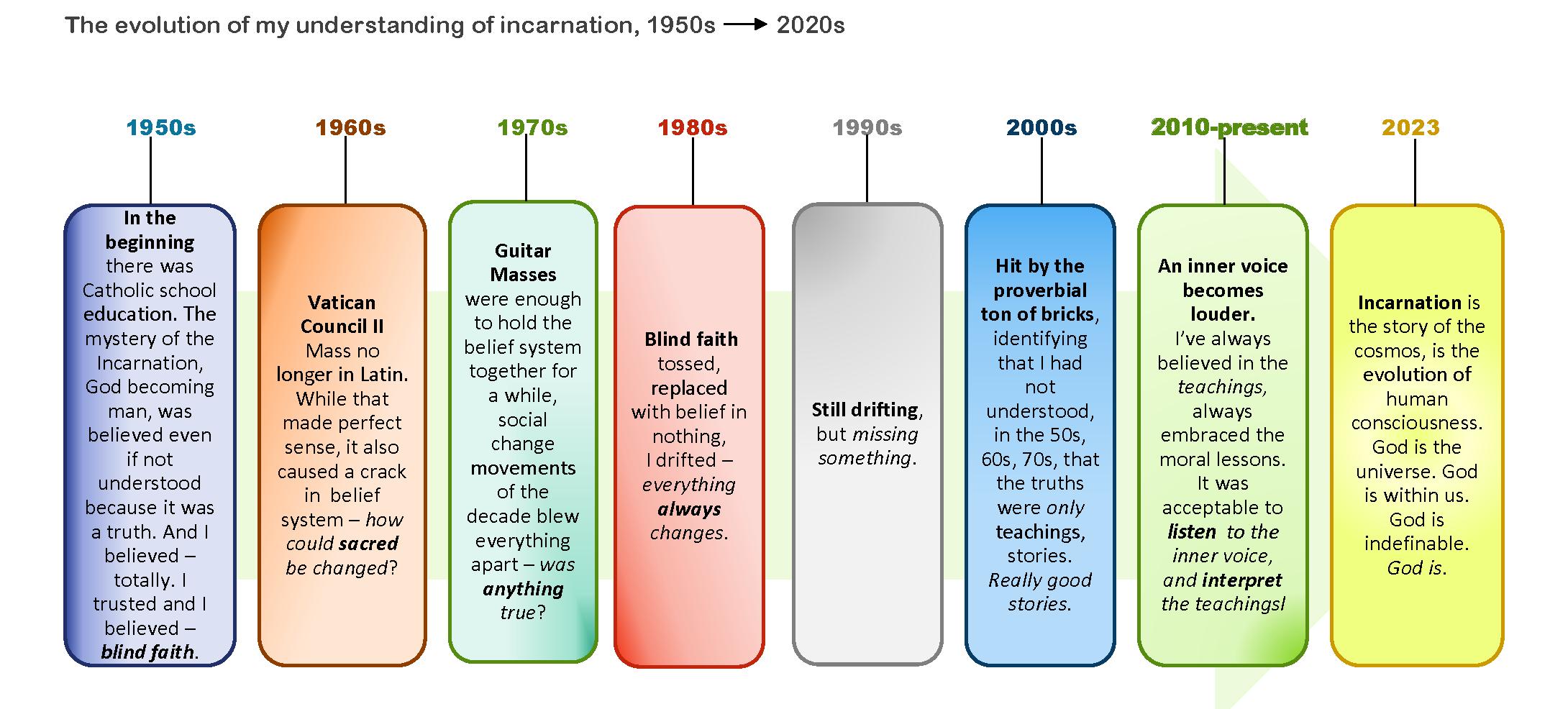 by Christine Wolff
by Christine Wolff
RE-SOURCE #1 — February 2 – May 27, 2023
1950s g 2020s
Chris Wolff. I am a lifelong Chicagoan, born in the 1950s. My twelve years of Catholic education were followed by the excitement and upheaval of social movements of the 70s, motherhood, higher ed, grandmotherhood. Most recently I’ve retired from the School of Environmental Sustainability at Loyola University Chicago. I continue to work with them on Healing Earth, a free, online environmental science textbook that integrates ethics and spirituality, https://healingearth.ijep.net/.
I met Terri MacKenzie, SHCJ about 40 years ago. Her understanding of the connections of God and creation was eye-opening and comforting and allowed me to explore my understandings and beliefs in entirely new ways. I am thankful our paths crossed!
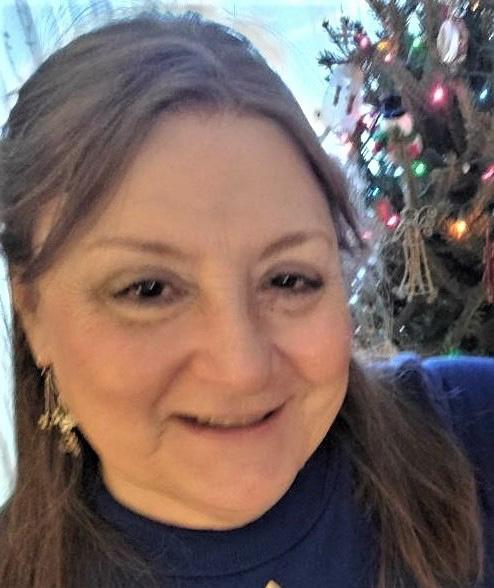 Design by Terri MacKenzie, SHCJ
Design by Terri MacKenzie, SHCJ


Incarnation — The Birthing of Presence
By Stella Envulu, SHCJ
RESOURCE #1 — February 2–May 27, 2023


EMMANUEL—GOD WITH US
WhenI think of Incarnation, the word ‘Presence’ pops up in my mind. I become aware of how God became present to us and by this sacred presence calls me too to be ‘present’ and to ‘be with’ others in community, in ministry and beyond in whatever little ways I can. By this, I share in his gift of ‘being with’ us.
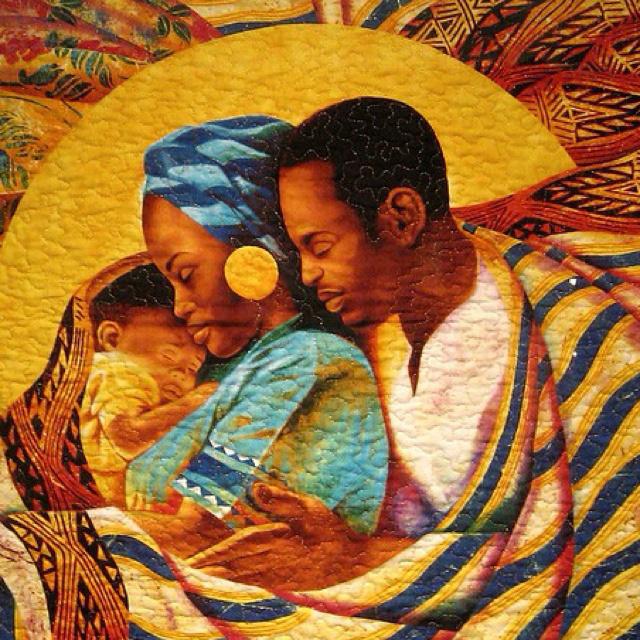
Hence, for me a daily living of the Incarnation is the ‘intentional’ giving of my presence and bringing life, newness, creativity, ideas and zest in whatever small ways to what I do and to the people around me with freedom and joy.
There may be ‘necessary’ challenges or obstacles, but my everyday summons is to continue to be intentional in my birthing of presence.
Further, some lines from Michael Smith’s song, ‘Ancient Words,’ draw my attention to the sacred Presence of the Incarnate God: ‘Holy Words long preserved for our walk in this world; they resound
with God’s own Heart. Oh let the ancient Words impart.’ These words remind me again that the Incarnate God is present in His Words. The Sacred Fire emanating from God’s Words draws me to the Presence of the incarnate God. CLICK to hear

“Ancient Words”
By being present I share in his gift of being with us.






 Henrietta Adindu, SHCJ
Henrietta Adindu, SHCJ







 Mary Lawrence, SHCJ
Teresa’s Prayer” by John Michael Talbot, from the album Quiet Reflections, 1988 Sparrow Records
Are the Body of Christ” by Scott Wesley Brown, from More Like You, Christian, 1998
the body of Christ, & each one of you is a part of it. 1 Cor. 12:27
Emmanuella Akweongo
Mary Lawrence, SHCJ
Teresa’s Prayer” by John Michael Talbot, from the album Quiet Reflections, 1988 Sparrow Records
Are the Body of Christ” by Scott Wesley Brown, from More Like You, Christian, 1998
the body of Christ, & each one of you is a part of it. 1 Cor. 12:27
Emmanuella Akweongo




 by Jim Cotter,
by Jim Cotter,
 the melody of Tantum Ergo
the melody of Tantum Ergo



 Philomena Aidoo, SHCJ
Philomena Aidoo, SHCJ

 Ann Durst, SHCJ
Ann Durst, SHCJ









 Huni-Dadzie, SHCJ
Huni-Dadzie, SHCJ




 Cecilia Nya, SHCJ, in an interview with Association for Catholic Information in Africa (ACI)
Cecilia Nya, SHCJ, in an interview with Association for Catholic Information in Africa (ACI)




 by Christine Wolff
by Christine Wolff
 Design by Terri MacKenzie, SHCJ
Design by Terri MacKenzie, SHCJ










